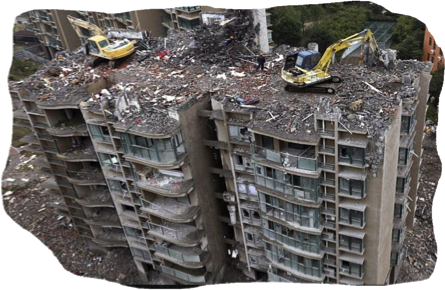President's Message
Message 10/2018

Mr Lim Soon Heng, PE, FIMarEST.
Founder President
HDB’s 99-year lease
The owners of land and the property on which it is built are two different parties. At end of the lease, the State will repossess the land. You may take away your property if you have the means.

The HDB 99-year lease debate rages, in Parliament, in the streets, in the media and on-line.
Do you really own your apartment? Yes, says the Government. No, says tenants faced with an asset whose value diminishes to zero in about thirty years. It is a conundrum that 80% of Singaporeans face as the day of reckoning looms in the horizon.
While freehold titles exist, it is really unsustainable in Singapore. Land is too scarce for that luxury. The Government must hold to all the land that belongs to the State for the greater good. Not to do so would put unbearable hardship on the landless. It would be a reversion to a feudal society where the landless toil and the landowners profit.
Singapore has increased space by building higher and excavating deeper taking roads and rails underground, along with bus interchanges, shopping malls and oil reserves. In its latest effort it is (ill-advisedly) building polders.
However, so far little is done to create space for living, work and play in our 700 sq. km of territorial waters.
In conversations with department heads of URA, HDB, MPA, JTC that the Society has had, these officers consider floating cities and infrastructures as fanciful and somewhat unhinged.
The common refrain is we are the world’s leading port. Our waters are teeming with ships; where can we find space in the sea?
We can if we break our mindset that ships need to come to land side berths to unload cargoes. No, I am not deranged. It is feasible. I will make this the subject of another message. But for now, let’s get back to the outrage about the repossession of HDB flats in the years ahead.
As its name suggests, the Society endeavours to draw the attention of urban planners to the fact that the sea provides huge opportunities for the rejuvenation of the entire Singapore landscape.
We have solutions to free up a few thousand hectares of land: Golf courses, incinerators, data centres, army camps, naval bases, airbases use up large tracts of land. We propose these, and many others be replaced over time by new ones that are erected on floating platforms.
Shipyards, refineries and power stations occupy waterfront land. They also require large tracts of the sea for the navigation of vessels carrying feedstock and fuel. They can be located offshore.
Concrete platforms are cheaper than land in Singapore. They last for more than 100 years when manufactured with the latest technology. Platforms large enough to accommodate hundreds of houses and thousands of residents are feasible.
The shipping lanes may be freed up. Our onshore ports can be replaced by one or several floating ports at the edge of our territorial waters, taking advantage of the fact that 80% of the cargo landing in our port are in transit to another destination.
Our ports have an aggregate foot print of about 800 hectares. It is not a big deal to put cranes and millions of boxes on floating structures. Such schemes are being contemplated in the Gulf of Mexico.
Of course, this would take several decades.
It is déjà vu. Dr Goh Keng Swee, seeing the swamps of Jurong before him in the 1960s envisioned the ports, shipyards, refineries and factories in the decades ahead. Goh’s glory rose above the taunts by experts. Singapore 2.0 awaits the next GKS.
In a conversation with the CEO of Singapore Land Authority, I learn that SLA’s remit does not include the sea around us and it would appear only MPA and to a small extent JTC has some jurisdiction on the use of the sea.
It is time we see our territorial water as a space resource for housing, industry, recreation, desalination, incineration, power generation, health, education and a lot more. It is possible to realise these without sacrificing our port activities.
Viewing our sea in this new light require the stewardship of the Prime Minister’s Office to cut across inter-ministry boundaries and turf war.
In two or three decades older HDB flats will be repossessed for demolition. Planning needs to start. Land intensive assets need to move offshore to make way for housing.
Having worked in the marine industry for several decades, I can confidently assert that Singapore has abundant resources to do so.
Our legal regime is not fully developed to address issues of ownership and sea bed lease for movable floating structures. This is true all over the world. But we need not wait. The law can catch up later. This is because for the time being, such assets may be treated as ships for which there are internationally acceptable laws that domestic and foreign investors can rely on. I shall return to this in a subsequent message.
Our building codes do not address the design of floating foundations. It does not matter. International marine classification societies performed such audits. They provide design assessment and certification services that are recognised by underwriters worldwide.
The significant difference with a property on land and one floating in an open sea is that in the latter, the structure and the foundation on which you erect your property is yours. It is yours to take it with you across national borders or into international waters as you wish.
As in shipping, the question of expiry of lease and the rights of the lessor to demolish do not arise. The asset belongs to the owner until he chooses to gift, sell or scrap it. It may be registered under the flag of a nationality different from its owner or host state.
Lim Soon Heng
15 September 2018
